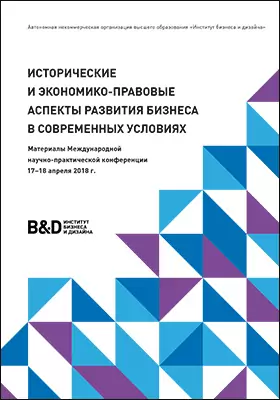Деловой английский в контексте современных тенденций развития бизнеса
Год: 2011
Место издания: Москва
ISBN: 978-5-7749-0612-3
Страниц: 163
Артикул: 11468
Возрастная маркировка: 16+
Краткая аннотация книги "Деловой английский в контексте современных тенденций развития бизнеса"
Учебное пособие способствует приобретению обучающимися лингвистической и социокультурной компетенции, необходимой для использования английского языка на завершающих стадиях профессиональной подготовки менеджеров.
Содержание книги "Деловой английский в контексте современных тенденций развития бизнеса"
Введение
Методические указания по выполнению практических заданий и самостоятельных работ
Unit 1. COMPANY STRUCTURE AND LEGAL FORMS OF OWNERSHIP
Unit 2. MARKETING
Unit 3. HUMAN RESOURCES MANAGEMENT
Unit 4. ACCOUNTING
Unit 5. INTERNATIONAL TRADE
Unit 6. OUTSOURCING AND OFFSHORING
Unit 7. INFORMATION TECHNOLOGIES IN BUSINESS
Unit 8. MERGERS AND ACQUISITIONS
Unit 9. TYPES OF SECURITIES
Unit 10. STOCK MARKET AND STOCK EXCHANGES
Glossary
Список рекомендуемых основной и дополнительной литературы и интернет-источников
Additional reading
Все отзывы о книге Деловой английский в контексте современных тенденций развития бизнеса
Отрывок из книги Деловой английский в контексте современных тенденций развития бизнеса
Unit 4ACCOUNTINGAccounting may be defined as a system of collecting, summarizing, analyzing, and reporting information about a business organization in financial terms. The business accounting as understood today is com-prised of financial accounting and management accounting. These two parts of the business system have some things in common and there are differences as well.Financial accounting and management accounting provide infor-mation to two different user groups. Financial accounting is concerned with providing information about a company’s operations to parties ex-ternal to the company such as the IRS, bankers, suppliers, creditors and shareholders. A primary focus is on standardized reporting and achieving compliance with applicable regulations. External users focus on broad in-formation that reveals the overall performance of the company as a whole. In addition, financial accounting only reports information on financial transactions that have occurred in the past.Management accounting is concerned with providing financial in-formation about a company’s operations to its internal managers. The focus is on developing relevant and timely information that helps inter-nal managers resolve the problems and make the decisions that arise on a day-to-day basis. Internal users also use non-financial information about the company, such as customer satisfaction levels and competitor data. Internal users focus on detailed information that reveals the performance of particular subunits of the company, such as divisions or departments. In addition, management accounting concentrates on past and present information, as well as the forecasting of future financial transactions.The second difference is in the structure or formats of presentation of information. Financial accounting has a single unified structure of pres-entation. The end products of financial accounting are its three basic
Книги серии
















С книгой "Деловой английский в контексте современных тенденций развития бизнеса" читают












Бестселлеры нон-фикшн













Новинки книги нон-фикшн













Новикова Е. Н. другие книги автора
и мы свяжемся с вами в течение 15 минут
за оставленную заявку



